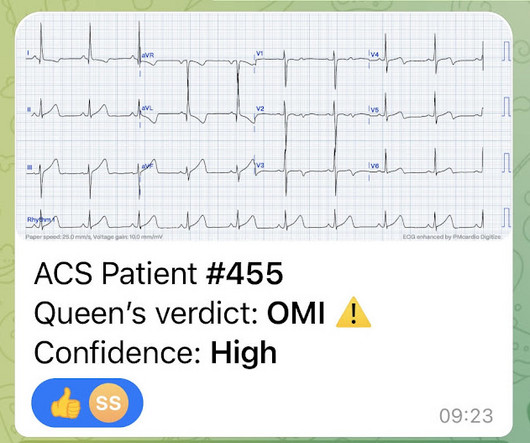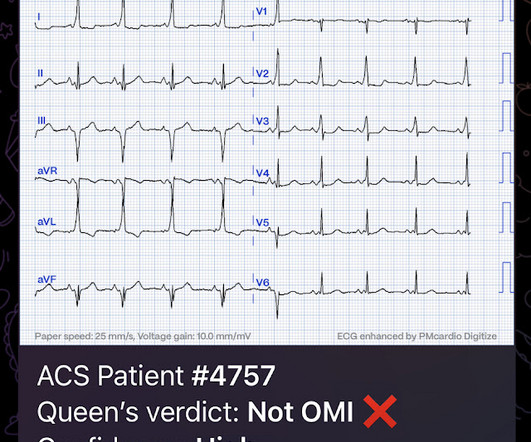A 40-Something male with a "Seizure," Hypotension, and Bradycardia
Dr. Smith's ECG Blog
OCTOBER 7, 2019
Why is the patient in shock? He was in profound cardiogenic shock. Both of these features make inferior + RV MI by far the most likely ( Pseudoanteroseptal MI is another name for this ) There is also sinus bradycardia and t he patient is in shock with hypotension. He was successfully stented.











Let's personalize your content